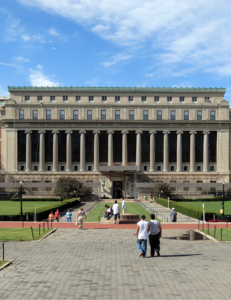How to Increase Socioeconomic Diversity at the Ivies
A new report says a 5 percent increase in low-income students admitted would result in more socioeconomic diversity among Ivy League students.

Ivy League colleges are under growing pressure to broaden their student base by using admission policies that increase the proportion of low- and moderate-income students on campuses and raise their rate of socioeconomic mobility.
A new report, released Tuesday by the HEA Group, a research and consulting firm focused on college access and success, says that the colleges can work toward those goals by increasing the proportion of such students by 5 percent.
Reaching this relatively modest target would only require the enrollment of 682 additional low-income freshmen across all eight Ivy League institutions, according to the report.
Dartmouth University would only need to enroll 53 more low-income students than it did in the fall of 2021. Cornell University would need to enroll the largest number of additional students, 162.
Michael Itzkowitz, president of the HEA Group, said these small shifts could nonetheless be meaningful.
“It’s such a small number of lower- and moderate-income students that Ivy League institutions need to enroll to increase the amount of less well-off students that they serve,” Itzkowitz said.
“If institutions wish to increase their socioeconomic mobility, there are intentional steps that they can take to get there,” Itzkowitz said. “Even a modest step, such as a 5 percent increase, would get them on their way.”
The recent Supreme Court ruling banning the consideration of race and ethnicity in admissions decisions provides even more incentive for selective colleges and universities to prioritize socioeconomic diversity in their admissions practices.
‘Very Possible’
Harvard had the highest proportion of Pell Grant recipients of any Ivy League institution, according to the report, with 21.8 percent, or 306 of its 1,404 first-year students. Brown University had the lowest proportion at 13.8 percent; it also enrolled a larger class of about 1,751 students, 242 of whom were federal aid eligible.
Brown also was the only Ivy League institution to experience a decrease in the proportion of low- and moderate-income students from 2011 to 2021, according to the most recent edition of the College Access Index, published by The New York Times in mid-September. Brown’s share fell by 3 percent while the other Ivies had increases ranging from three to eight percentage points.
If all of the Ivies combined increased the proportion of Pell Grant recipients admitted by another 5 percent, they’d reach an overall average of 23.5 percent, according to the report.
“I think it’s very possible that there could and should be more than 5 percent as an increase, but I see this as a very achievable goal for each of these institutions,” Itzkowitz noted. “There’s really no excuse that they couldn’t admit at least 5 percent more.”
